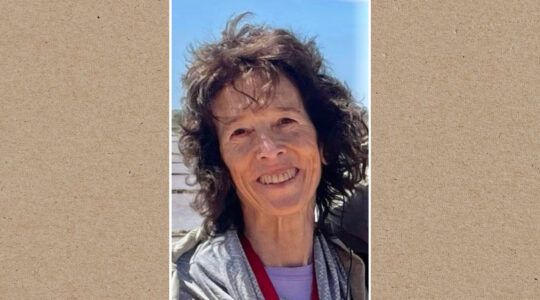For actress Helen Mirren, who portrays Holocaust refugee Maria Altmann in “Woman in Gold,” her critically acclaimed role is a slice of Jewish history.
It is “amazing,” Mirren said in accepting the World Jewish Congress’ Recognition Award last month, “that to this day the world is still struggling with this — the Jewish people’s attempt to reclaim their history.”
She said the movie, which recounts Austrian-born Atmann’s six-year legal battle to get back five paintings from the Austrian government — including Woman in Gold — stolen from her family by the Nazis “is about reclaiming history, memory, culture and family. That’s what the restitution of art is all about; it’s not about financial benefit.”
WJC President Ronald Lauder, who bought the painting from Altmann in 2006 for $135 million for display at the his Neue Galerie, said the movie’s release earlier this year “changed the whole field of art restitution. … It has made the world know what happens when someone comes to your home and takes paintings off your wall.”
The name of the 1907 painting of Altmann’s aunt by Gustav Klimt was originally called Portrait of Adele Bloch-Bauer 1. But Lauder said the “Nazis changed it to Woman in Gold because Adele sounded too Jewish.”
“Being a part of this film and preserving Maria Altmann’s legacy has been a truly exceptional experience from the start,” Mirren said in her brief remarks. “The real power, energy, soul of the film is Maria Altmann,” she said. “I feel very passionately about this film.
“The terrible thing is that we are losing the generation that has a living experience of these realities,” Mirren observed. “The film makes people know the reality of it. I didn’t try to impersonate her; I tried to put her memories into my mind because they’re not my memories … It’s a devastating place to have to put oneself.”
In related news, the Fred Jones Jr. Museum of Art at the University of Oklahoma cited a variety of technical defenses – including the expiration of the five-year statute of limitations and jurisdictional issues – for successfully fighting in May a suit by the daughter of the original owner of another painting, “Shepherdess Bringing in Sheep,” which was seized by the Nazis in 1941.
Among other museums said to be improperly defending against Nazi-looted art claims are the Museum of Modern Art in New York, the Toledo Museum of Art, the Detroit Institute of Arts, and the Museum of Fine Arts in Boston.
The Nazis looted upwards of $100 billion worth of art, Lauder noted, and a report issued last week by the World Jewish Restitution Organization found that a number of prominent museums in the U.S. continue to knowingly display some of those pieces.
“Museums are central to a civilized society,” said Gideon Taylor, WJRO chair of operations. “The American museum community, while understandably an advocate for artwork to remain in public hands, must follow through on its prior commitments not to taint collections with art stolen during the Holocaust.”
Support the New York Jewish Week
Our nonprofit newsroom depends on readers like you. Make a donation now to support independent Jewish journalism in New York.
The New York Jewish Week brings you the stories behind the headlines, keeping you connected to Jewish life in New York. Help sustain the reporting you trust by donating today.




